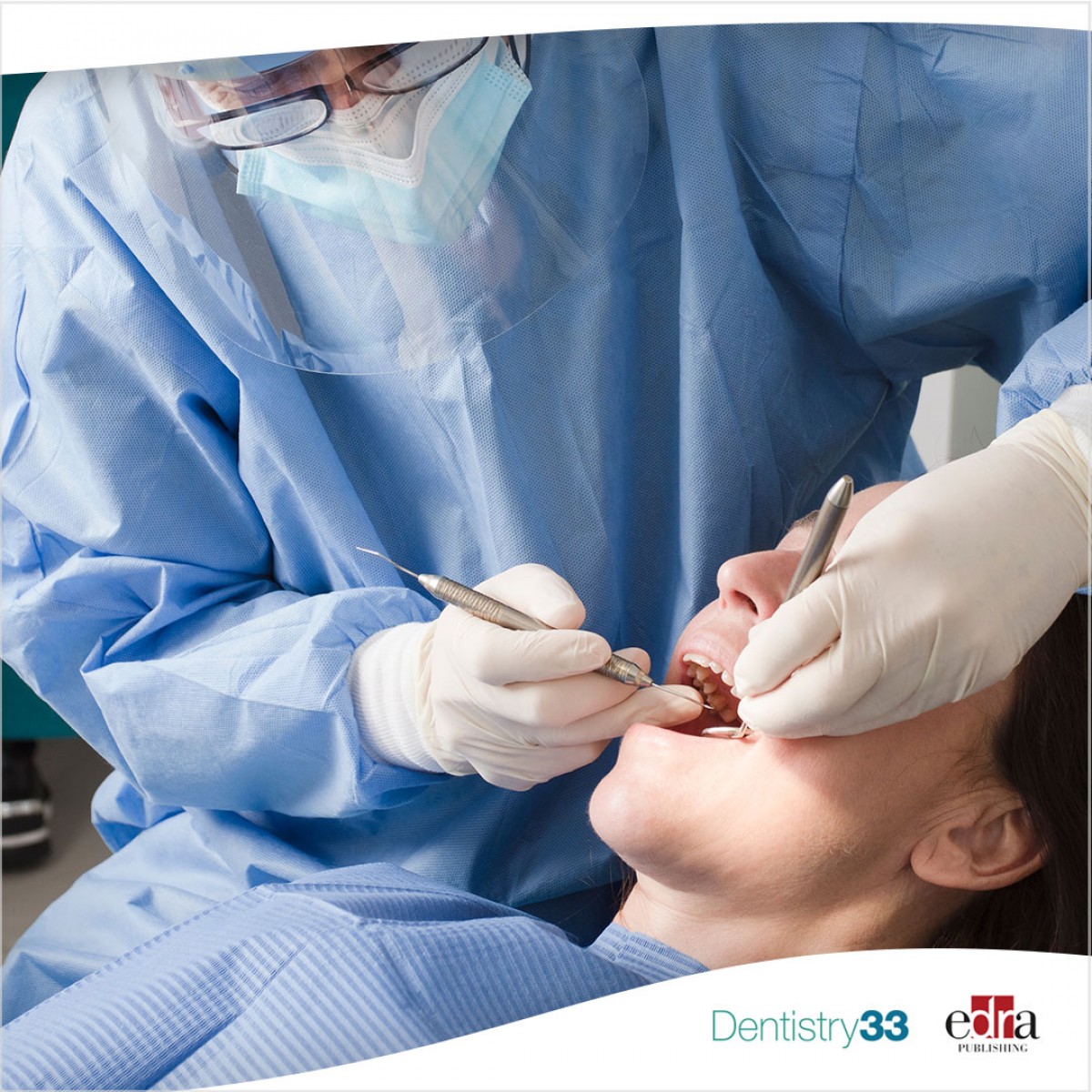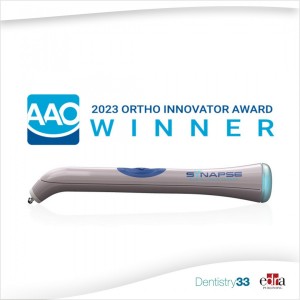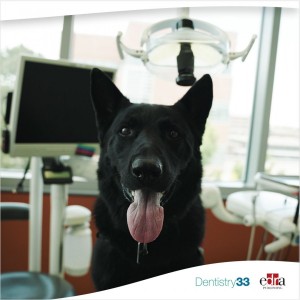
Electrodermal activity in pulp diagnosis and assessment of odontogenic pain
Lara Figini
At present there is still no quantitative measurement or objective method for the assessment of dental pain. Pulp diagnostic tests, which include cold testing and electrical testing (EPT), are also based solely on patient responses.
The cold test causes tubular fluid to flow outward from the dentin and stimulates the nerve fibers. EPT works by conducting a current through the tooth to stimulate nerve fibers. However, both tests are not 100% accurate in determining pulpal status. In addition, despite high sensitivity and specificity, these tests are often inconsistent or inconclusive in patients who are unable to communicate, such as young children, and in patients with intellectual disabilities or a language barrier.
An automated record of patient responses to pulp vitality tests remains an unmet need in endodontic diagnosis. Electrodermal activity (EDA) can be a physiomarker for testing pain before and after the administration of local anesthesia in dentistry and for making pulpal diagnosis.
EDA, known as galvanic skin response (GSR), is a measurement of changes in the electrical conductance of the skin, highly associated with sweat gland activity modulated by the sympathetic nervous system (SNS).
Multiple indices can be used to evaluate EDA, including skin conductance level (SCL), nonspecific skin conductance responses (NS.SCR), time-varying index of sympathetic activity (TVSymp), modified time-varying index of the EDA (MTVSymp) and others.
Specifically, TVSimp quantifies the phasic response of the EDA and is calculated using a high pass filter (0.01 Hz), demodulation of the variable frequency complex and the Hilbert transform. TVSymp is a reconstructed EDA signal with EDA frequency bandwidth associated with sympathetic tone (0.04–0.25Hz) and is one of the most sensitive indices with high consistency compared to other EDA indices.
Materials and methods
In a study published online in November 2022 in the International Endodontic Journal, the authors investigated whether EDA could serve as a complementary tool for pulpal diagnosis and as an objective tool for assessing dental pain before and after anesthesia. local. A total of 53 subjects (189 teeth) and 14 subjects (14 teeth) were recruited for pulpal diagnosis and dental pain assessment before and after local anesthesia, respectively.
EDA was recorded using commercially available devices such as the PowerLab and Galvanic Skin Response Amplifier, in addition to cold and electrical pulp tests (EPT).
Participants rated their level of pain or sensation via the visual analog scale (VAS) from 0 to 10 after each test. EPT-stimulated EDA activity before and after administration of local anesthesia was recorded for participants who required root canal treatment (RCT for pulpitis). Raw data were converted to the variable index sympathetic activity, a sensitive and specific parameter of EDA over time. Statistical analysis was performed using Python 3.6 and its Scikit-post hoc library.
Results
Electrodermal activity was upregulated by cold stimuli and EPT tests in normal pulp. TVSymp signals were significantly increased in viable pulp compared to necrotic pulp by both cold test and EPT.
Teeth showing intense cold sensitivity with or without persistent pain had higher peak TVSymp numbers than teeth with mild cold sensation. EDA activity and VAS scores were recorded in patients with pre- and post anesthesia painful pulpitis.
Post-anesthesia EDA signals were significantly lower than pre-anesthesia levels. Approximately 71% of patients (10 out of 14 patients) experienced no pain during treatment and reported a VAS score of 0 or 1. Most patients (10 out of 14) showed a reduction in TVSymp following the administration of anesthesia. Two out of three patients who experienced increased pain during root canal treatment RCT (post-treatment VAS > pre-treatment VAS) showed a post-anesthesia TVSymp increase.
Conclusions
From the data of this study, researchers concluded that the use of EDA in pulpal diagnosis and for the evaluation of dental pain can offer promising results. The authors said that while testing was limited to subjects who had adequate communication skills, the team’s future goal is to be able to use this technology to aid in the endodontic diagnosis of patients who have limited communication ability.
Hanh T. Tran, Youngsun Kong, Ankur Talati, Hugo Posada-Quintero, Ki H. Chon, I-Ping Chen. “The use of electrodermal activity in pulpal diagnosis and dental pain assessment.” Int Endod J. March 2023; 56:356–368. https://doi.org/10.1111/iej.13868
 Related articles
Related articles
Editorials 21 December 2023
Marijuana Component Offers Opioid Alternative by Effectively Treating Dental Pain
In a groundbreaking study that could revolutionize dental pain management, Rutgers researchers have found that cannabidiol (CBD) – the non-addictive marijuana derivative – alleviates acute dental...
Editorials 16 November 2023
Pioneering Pain-Free Orthodontic Care: Sakowitz Smiles Orthodontics Introduces Dental Pain Eraser
Top Industry Innovation Award for 2023 Recognizes the Dental Pain Eraser's Pioneering Pain-Free Orthodontic Approach
Pediatric dentistry 15 June 2023
The management of intense pain in childhood is often difficult and causes concern both for the parents of the young patient and clinician.
The QuickStrip technology will initially have two applications in the dental industry: LQS, a Lidocaine thin film used professionally as a topical anesthetic application to provide pain free dental...
Pediatric dentistry 24 April 2023
By Matthew Hastings, University of Colorado Anschutz Medical Campus News
Lexi Dunnells, a dental student, found a statistically significant decrease in pulse for the patient group that had Ziggy the dog present from the beginning of the appointment to their pulse reading...
 Read more
Read more
Editorials 10 October 2025
With proud smiles and crisp white coats, ninety-three learners from the DDS Class of 2029 and the International Dentist Pathway Class of 2028 marked the start of their dental careers at the UCSF...
Periodontology 10 October 2025
Continuous professional development (CPD) in Periodontology refers to the overall framework of opportunities that facilitate a life-long learning practice, driven by the learner-practitioner and...
TheraBreath, the #1 alcohol-free mouthwash brand in the U.S.*, has introduced a new line of dentist-formulated, clinically tested toothpastes designed to support professional oral care...
News 10 October 2025
New officers and trustees were installed at the Minnesota Dental Association’s Leadership Conference on September 19 in Minneapolis.
News 10 October 2025
Smartee Denti-Technology today announced that Professor Gang Shen, its Chief Scientist and Executive President of TaiKang ByBo Dental, has once again been named to the World’s Top 2% Scientists...















